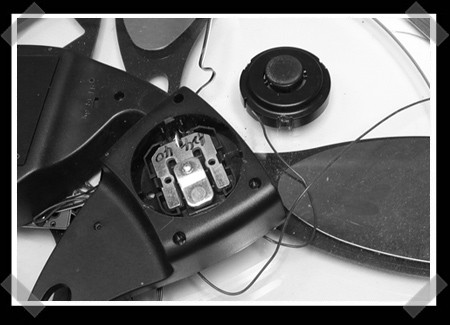
[Cliff Miller] pointed out this incredible project from 2004. [John Pultorak]’s journey began in late 2000 when he decided to build a 60’s or 70’s era minicomputer. While gathering technical documentation, he found some interesting information on the Apollo Guidance Computer and felt that was the way to go. The AGC was the first integrated circuit computer ever built. Designed by MIT in 1964 it was constructed from ~5000 ICs, almost all 3-input NOR gates. [John]’s version uses late 1960’s 74LS TTL logic which gains him a 10 to 1 reduction in the number of ICs. A good thing when you have to do ~15K wirewrap connections. He also used flipflops and register chips instead of building everything from NOR gates. [John] essentially built the AGC three times: First, he coded a simulator in C++. Then, he imported the logic design into CircuitMaker to verify that it would actually work. Finally, he built the 3 by 5foot machine. He’s provided an amazing amount of documentation for anyone that wants to explore this device and the overview alone is well worth a look.
Misc Hacks4188 Articles
Hacking A Scale To Test Rocket Motors

[David Steeman] sent us this project. He uses a consumer scale to measure rocket engine thrust. He wanted to be able to map the thrust curve of his homemade rocket motors to determine whether they are meeting the design goals. It does this by measuring the force applied by the rocket engine via a microcontroller that records it in a text file on a computer. He then analyzes this data in an Excel spreadsheet.
The sensors were harvested from a consumer scale while the rest of the electronics were built by hand. He’s using a PIC 18F2550 microcontroller which has a built in USB interface. He has breakdowns of each piece with detailed information on how it works as well as some nice pictures. There is also a list of future improvements that he would like to do such as increasing sample speed, integrating it with the ignition, and decreasing the physical size. Files for the schematic, firmware, and excel spreadsheet are available for download at the bottom of the page, so keep scrolling down.
1100 Barrel Paintball Gun
[Adam] and [Jamie] from Mythbusters built a paintball gun with 1100 barrels as some graphics card marketing gimmick. It’s a formidable beast, but we’re sure it takes forever to prep.
[via Laughing Squid]
Aurora Mixer Now Available

It’s been a long time coming but that highly sought after open source mixer, the aurora224 is now available for purchase on the company’s website. The aurora mixer is a fully programmable USB mixer complete with 24 back lit knobs, 2 faders, and a single crossfader.
While the instructions on how to assemble your own mixer from scratch have been available for sometime now, many wanted a kit complete with everything needed to avoid having to source the parts themselves.
The aurora mixer is available in 2 versions, a fully assembled turn key deck and a DIY kit that requires the use of a soldering iron and the ability to follow directions.
So, if you’ve wanted to build your own aurora mixer but never knew where to start, this may be your lucky day. Don’t wait too long as you have until September 1st to get your order in.
Wifi Robot : A Hacked WRT54GL Rover
[Jon Bennett] sent us this link to his Wifi Robot. After playing with a Linksys WRT54GL router, he was inspired to build something that would utilize this embedded Linux system. Using a thrift store R/C truck, he built a wireless robot rover. This thing can be controlled over the internet, or by laptop with a range of about 500 meters.
The router has been modified to have 2 Serial ports and a 1GB SD Card. It connects to a micro controller, which could be an Arduino or AVR Butterfly. He has supplied information for both. The truck has been mostly gutted, leaving only the chassis and electronics. He had to beef up some of the truck electronics when they fried under the load. The entire unit is powered by a pair of 7.2 Volt 3800 mAh battery packs. The most important thing on the list though, is the horn. You can honk the horn while you are driving this thing around.
The site supplies tons of information including pictures of his build, videos of it in action, speed tests, schematics, software downloads, and resource links. Great job [Jon].
Quick AVR

[Kyle Stewart] sent us this quick AVR project. He designed it to sit vertically on his breadboard to take up less space. It doesn’t use any surface mount components, to make the assembly easier. You can download the schematic, parts list, and eagle files for the project on his blog.
Create Your Own Playlist Hosting Service With Opentape

While Muxtape takes a breather to resolve an issue with the RIAA, Lifehacker has a step by step guide on installing and running Opentape, an open source PHP web application that’s similar to Muxtape. Take matters into your own hands and create your own version of playlist hosting heaven. Since Opentape is open source, you can adapt it and make it an even better application. Maybe your creation will be even more popular than Muxtape… and will lead to the same problems with the RIAA.











